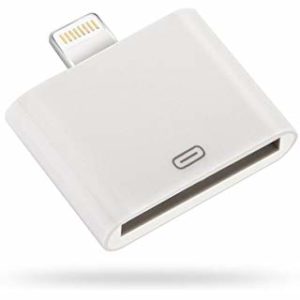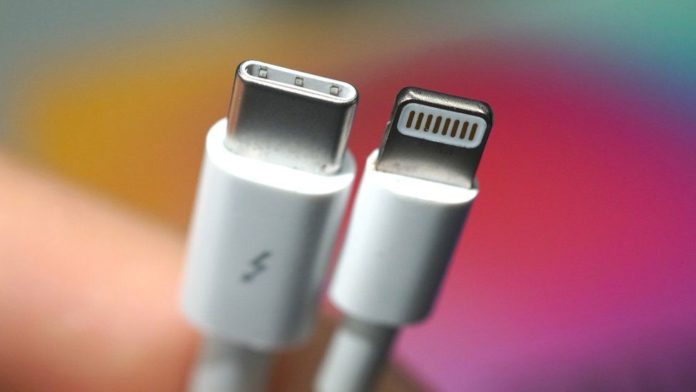Thinking if iphone 15 lightning port connector will survive? We’ll show you regarding whether iphone 15 lightning port connector will survive. Since Apple was still preparing to release the iPhone 5 ten years ago, every iPhone and iPad at that time continued to use the outdated 30-pin iPod connector. Apple unveiled the Lightning connector in September 2012, calling it “a modern connectivity for the next ten years.” It appears that Lightning won’t make it past the iPhone 15 ten years later.
Pre-Lightening era
The iPod, which had a unique 30-pin connector and was the only portable gadget made by Apple before the iPhone, was released in 2003. (Actually the first two generations had a FireWire connector that was only compatible with Macs).
Naturally, the same 30-pin connector used by iPod was chosen for iPhone, allowing it to benefit from the ecosystem of accessories existing on the market.
Since the iPhone was a niche product in the beginning, this wasn’t a concern for the majority of consumers. You were already pretty familiar with the connector if you owned an iPod. But as time went, the iPhone developed while the iPod gradually died.
Some things had to alter as cellphones became slimmer and businesses worked to develop better cameras and batteries. Lightning then enters the scene.
The connector for the next decade
Phil Schiller, then-chief Apple’s of marketing, made the Lightning connector official on stage. Lightning is significantly more compact and reversible than the 30-pin connector, making it more user-friendly than its predecessor.
Will Iphone15 survive the Apple Lightning Connector?

Apple even released a 30-pin to Lightning adaptor to make the transition more easy. This has allowed more internal space in the devices for other components because Lightning is 80% smaller than the 30-pin connector, which Apple also used as a rationale to eliminate the headphone jack years later.
Swiftly after, Lightning was included in other Apple products. Apple also unveiled the iPad 4 and the first iPad mini, both with a Lightning connector, a month after the iPhone 5 was unveiled.
The Lightning connector was also included in the fifth-generation iPod Touch and the seventh- and last-generation iPod nano. After that, the 30-pin connector was never included with any more Apple products. It was a swift changeover. When I first held an iPhone 5, I was particularly excited by the Lightning connector.
And it had a far nicer feel than the previous iPod connector. Additionally, it was unquestionably superior to Micro-USB, which at the time was the industry standard for other mobile devices. But as time went on, the industry started to evolve once more. But not for iPhone users this time.
USB-C
Tech companies were attempting to modernise computers, particularly laptops, in the same way that smartphones were developing and becoming slimmer. Then, in 2014, USB-C was unveiled by the group in charge of the USB standard, of which Apple is a member.
a newer, more advanced USB standard with a brand-new, quicker, more compact, and reversible connector. With the 2015 MacBook, Apple quickly released its first USB-C-compatible product. It had just one USB-C port and was Apple’s tiniest notebook.
Despite being phased out, the MacBook’s legacy is still felt in a number of other Apple devices. USB-C is a part of that history. Since USB-C supports previous USB standards, DisplayPort, HDMI, VGA, Ethernet, and even power transmission in a single cable, Apple lauded it for its versatility.
Apple proudly claimed on its website that it helped create a “new worldwide networking standard.” But while being marketed as the connector of the future, USB-C took Apple longer to integrate into its other products than Lightning did. Actually it was time for the MacBook Pro to support USB-C in 2016. Apple added the connector to the MacBook Air and iPad Pro in 2018. Currently, every Mac in the range uses USB-C.
Although our sources indicate that this is soon to change, the iPad’s base model is still the only one that can actually uses the Lightning port. Lightning to USB-C cables have been introduced by Apple in place of Lightning to USB-A cables. All iPhone models and their accessories continue to use the Lightning connector, nonetheless.
However, because USB-C is an open standard, a wide range of products are now available that support it. It is becoming the new norm for gadgets like computers, tablets, and smartphones.
What’s Next?
Ten years ago, having a specific port for the iPhone didn’t seem to be an issue. Today, Lightning, however, appears more out of date than ever.
Having to keep a Lightning cable in your home for a single product sounds hopelessly ancient to individuals who already own a Mac and an iPad with USB-C, much alone other gadgets like headphones and game controllers.
Lightning must now contend with the constraints of the technology. The iPhone’s connector is still based on USB 2.0, which is significantly slower than USB 3.0.
Lightning has turned into a nightmare for Pro users in the era of 4K ProRes video, which produces enormous files. It does not support the lightning-fast charging speeds that USB-C does.
Will the iPhone ever support USB-C, though? Why won’t Apple get rid with the Lightning connector?
Well, the firm alone has the answers, but it’s safe to believe that Apple still benefits financially from Lightning. Typically due to the fact that since it is a proprietary connector, Apple must be paid a license fee by third-party manufacturers.
Furthermore, Apple’s own Lightning accessories aren’t exactly inexpensive. Lightning should still be present on iPhone 14, however Apple might not use iPhone 15 lightning port connector.
The EU made the decision to require a USB-C port on every smartphone and tablet sold in European nations earlier this year. Brazil or India, and even the United States have been thinking about doing the same. In the end, Phil Schiller could have been correct.
The ten previous years’ connectors were bolts of lightning. Because Apple might be compelled to discontinue its exclusive connector within the next ten years.

